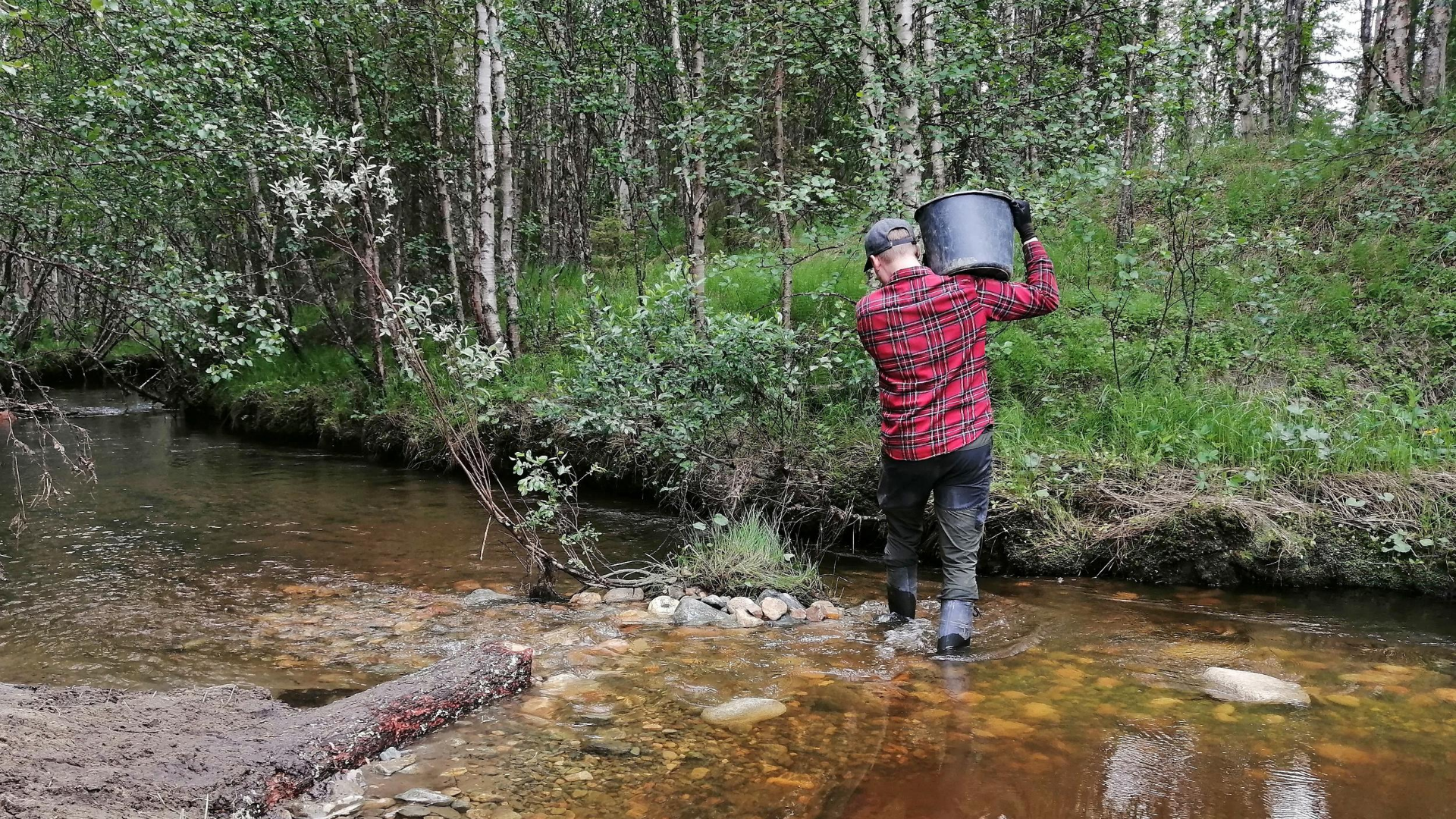On the last Saturday in June, fishing and nature enthusiasts gathered again to help to restore the Parvajoki where this river runs close to the village of Kittilä. The Parvajoki river restoration project started in 2018 when Ville Lahti contacted the Lapland Centre for Economic Development, Transport and the Environment, which supported the idea and helped identify the owners of land areas along the Parvajoki. These owners too warmed to the proposal.
The goal of the project is to boost the Ounasjoki region’s stocks of brown trout by enhancing the Parvajoki’s suitability for this species. The first sessions of work to restore the river took place last year. In addition, the Lappia Vocational College – which has a fishing-industry training unit in Simo – and Natural Resources Institute Finland conducted electrofishing survey sampling to determine the river population of various fish species.
“Draining was performed in the main channel of the Parvajoki (along a 6–7 km stretch) in the late 1950s. Before that, it was known to be a good stream for trout. Today, there are few brown trout populating the river. However, because the river has a spring as its source, the water is of good quality and remains relatively cool throughout the year, providing excellent conditions for brown trout,” explains Pekka Kämäräinen, a mine exploration geologist at Agnico Eagle Finland and one of the project’s leaders.
“Lack of spawning areas, shelter for parr, and food are a problem, though. Earlier canalization and side ditches have caused substantial sediment accumulation in the river, blocking the basins and spawning areas. In addition, brook trout were introduced to the river. That species competes with brown trout for the habitat’s scarce resources.”
“There is one brook upstream of the Parvajoki with clean water flowing over clear gravel. The contrast between this natural brook and the artificially formed canal leading from it is huge. The restoration is aimed at imitating the structure of this channel that has remained in its natural state,” says Ville, who works at our mine’s Etra consignment warehouse.
Now the volunteers have restored a 20-meter-long stretch of stream-type area. They built spawning areas and parr shelters, and they dug holes for the trout to rest in. Wood material was introduced to the stream bed, to provide further shelter. Additionally, a few wooden structures called groins were built to guide the stream flow, for creating meanders and removing sediment from the stream bed. In total, 7–8 tons of rock material was transferred in the stream bed, transforming a quiet stream into a diversity-rich raging torrent that attracts brown trout.
“Students from the Lappia Vocational College will visit the Parvajoki to perform electrofishing-based tests in August. The water quality and the effect of the restoration measures on the structure of the river bottom, vegetation, and such factors as the stream’s velocity will be assessed at the same time. Then, the results can be compared with those of last year’s tests from before the restoration work started,” reports Ville.
Pekka says, “The work will continue in summer if the active volunteers have time and energy, and next winter we will transfer materials along the river to places that are hard to reach during the summer.” There is still a lot of work to be done in the restoration of the river, and new volunteers are always welcome to help.
“I want to thank Kivitrans Oy for the gravel used in restoring the brook this year and Agnico Eagle for its interest and participation in the project, on behalf of Kittilä’s fishing cooperative,” says Ville.
For more information about the “rehabilitation” of the Parvajoki, visit the Web site of the Kittilä fishing cooperative, www.riikonkoski.fi/parvajoki (in Finnish).
Visit our Facebook page to see photos of the restoration project!



Leave A Comment